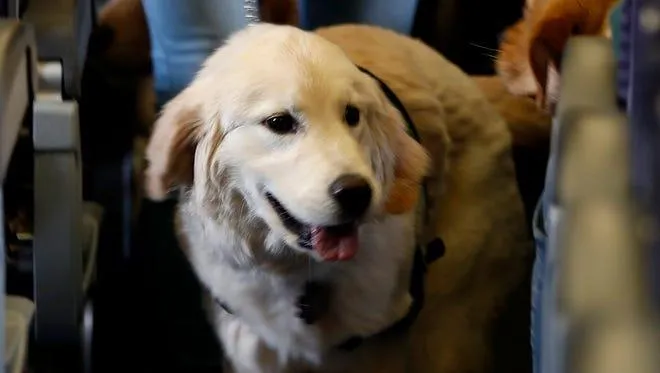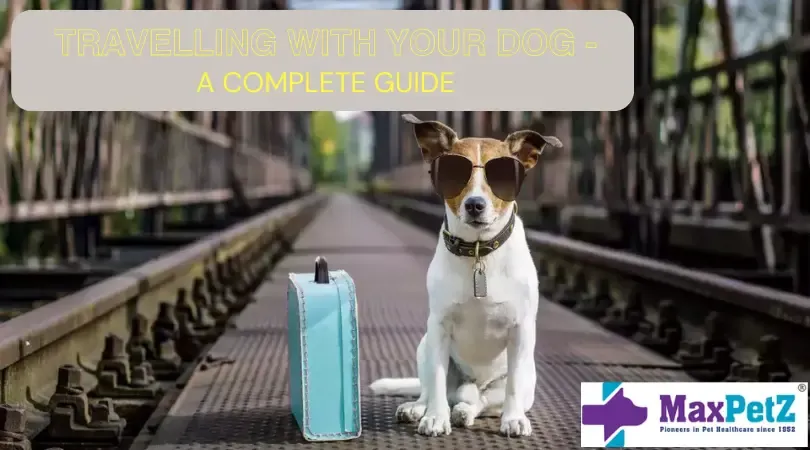A Comprehensive Guide to Taking Your Dog on a Plane
Is It Even Allowed?
The short answer is yes, many dogs are permitted to fly in the cabin of commercial aircraft. However, there are some key restrictions imposed by airlines. Most major airlines in the U.S. and internationally allow small dogs and cats to travel with their owners in the cabin if they remain in their carrier under the seat for the entire flight. Larger dogs that cannot fit in a carrier under the seat will need to be checked as cargo. Let’s review the specific requirements from different carriers.
What Are the Size Limits?
- Delta – Dogs must be able to fit comfortably in an approved hard-sided or soft-sided kennel that can slide completely under the seat in front of you. Kennels cannot exceed 18 x 14 x 8 inches or weigh over 40 pounds total with your dog inside.
- American Airlines – Dogs must be able to remain on your lap in an FAA-approved pet kennel not exceeding 17.5 inches long by 11 inches wide by 7.5 inches high.
- United – Kennels cannot exceed 17 inches long by 11 inches wide by 9 inches high. Further restrictions apply for snub-nosed and brachycephalic dog breeds.
Most airlines have similar sizing standards, so double check the specific requirements for your carrier. Dogs big enough to qualify as service or support animals may have some exemptions to size limits but will still need proper certification.
Health Requirements
In addition to sizing standards, all major airlines require dogs traveling in-cabin to:
- Be at least 8 weeks old
- Be healthy, show no signs of illness, and have certification of current vaccinations from your veterinarian
- Remain in an approved kennel or carrier under the seat or at your feet at all times during the flight
The kennel must remain closed except for brief periods of air, food, and water for your dog. Make sure identification is displayed outside with your contact details in case of emergency. Advance planning is key since health documents expire and need renewing before travel dates.
Breed Restrictions
Some airlines impose breed-specific restrictions due to perceived issues with certain purebred and mixed breed dogs. For instance:

- Delta prohibits bully breeds like pit bulls from flying in cabin or cargo.
- United bans snub-nosed breeds from flying in hot weather months due to overheating risks.
- Alaska Airlines does not allow certain Mastiff breeds like bullmastiffs and dogo Argentinos in cabin.
Be certain to verify your dog’s breed does not cause issues before booking flights. Certificates of breed from vet offices may help alleviate restrictions for questionable dogs. Flying as cargo is an option for banned breeds but comes with tougher regulations.
Cost Considerations
Airlines charge pet fees on top of regular ticket prices to bring dogs onboard. Fees vary greatly based on carrier and flight class:
- Delta economy = $125 each way for in-cabin pet
- American first class = $200 each way for in-cabin pet
- United international = $125-175 each way for in-cabin; $200+ checked
Factor these fees into your travel budget as they are non-refundable once booked. Cargo services can run $500-1000 each way depending on destination. Pet-friendly hotels and rental cars add to expenses. But in the end, most dog owners say the comfort is worth it versus stressful alternatives like boarding.
Advanced Preparations
Planning is key for a smooth flying experience with your furry friend. Here are some tips:
- Book flights, hotels, and transport accepting pet policies 4-6 months ahead if possible.
- Get vet certs and documents in order before the 60-day expiration window.
- Acclimate your dog to carrier use well before travel dates through positive reinforcement.
- Bring familiar blankets, toys, treats to ease stress without extra weight jeopardizing flight approval.
- Pack any critical medications or supplements in carry-on in case of delays affecting checked bags.
By following these steps, you can ensure your good boy or girl gets accustomed to plane riding. Letting the airline know you’re bringing a pet at booking also prevents unpleasant surprises at check-in. Advanced prep makes the whole trip lower-stress for you and your furry friend!

Handling the Actual Flight
Once documents are approved and boarding begins, keep these best practices in mind:
- Accompany your dog to the aircraft and carry the kennel whenever possible rather than checking at the gate.
- Board early to get settled before other passengers. Consider requesting bulkhead or exit rows for more foot space.
- Bring water, but no food in case of turbulence risking spills.
- Remain attentive and calm to help your dog stay relaxed through takeoff and landing.
- Request a muzzle if your dog is prone to noise, but never force one against its will.
From my experience, taking brisk walks before and after flights helps dogs release energy and go to the bathroom. Try distracting them with treats and praise during noise periods. With patience and care, you and your pup can get used to flying together!
Does this help explain the ins and outs of taking your dog on a plane? Let me know if you need any clarification on the rules, tips, or have additional questions! Proper preparation and adherence to airline policies go a long way toward making flying as stress-free as possible for dogs and their people.
Tips for Taking Your Dog on a Plane
| Tip | Details |
|---|---|
| Choose the right airline | Research airline pet policies and restrictions. Make sure they allow your dog’s breed and size in the cabin. |
| Book early | Many airlines limit the number of pets allowed per flight. Reserving early ensures your dog gets a spot. |
| Prepare ID tag and health records | Have your dog microchipped or tagged with recent rabies vaccination info and your contact details in case they get lost. |
| Use pet travel carrier | Only soft-sided carriers that fit under the seat are allowed. Make sure your dog is comfortable for take-off/landing. |
| Check documents required | Requirements vary by country. Confirm health certificates, import permits needed for your travel destination. |
FAQ
-
Can I bring my dog on the plane in the cabin?
Most major airlines in the US and Canada allow dogs to fly onboard as cabin pets. However, there are rules about the size and breed of your dog. Generally, dogs must be small enough to fit under the seat in a carrier. Many airlines have size restrictions with the maximum weight and dimensions. Make sure to check the pet policy for your specific airline.
-
Do I need any paperwork for my dog to fly?
Yes, you will need to provide documentation that your dog is healthy and updated on vaccines. The major requirements are a health certificate from your vet stating that your dog is fit to travel and has received rabies and other routine shots within the last few years. You may also need to show proof of vaccination records. Most airlines require this paperwork within 10 days of your flight.

-
How do I transport my dog on the plane?
Dogs must be kept contained in an FAA-approved pet carrier that fits under the seat in front of you. The carrier should be sturdy, have proper ventilation and be large enough for your dog to stand up, turn around, and lie down comfortably. However, on some short flights the carrier may need to fit entirely on your lap. Bring water and treats, and consider using a pee pad in case of delays. You’ll want your dog to feel secure in the carrier during take-off and landing.
-
Is there a charge for flying with a dog in cabin?
Most airlines charge pet fees in addition to the standard ticket price for a dog to fly in the cabin. Fees vary depending on the airline but generally range from $100 to $200 or more per direction. There may also be surcharges applied depending on the size of your dog. Be sure to check all applicable baggage and pet fees before booking your trip. At the same time, flying with a pet can cost significantly more than traveling without one, so plan ahead financially.
-
What are some tips for making my dog comfortable on a plane?
Besides having proper vaccination records, a sturdy carrier, and potty provisions, there are a few things you can do to hopefully make your pup more at ease during air travel. Bring favorite chew toys or treats to occupy him. Consider calming aids like CBD or pheromone sprays. Sit near your dog’s carrier if possible for reassurance. Practice taking your dog new places before the big trip. With patience and preparation, even nervous flyers can learn to feel safe 36,000 feet up!
-
Is it very stressful for dogs to take a plane?
Flying can indeed be tremendously unnerving and disorienting for many dogs. Changes in air pressure, unfamiliar surroundings, and loud engine noises are all novel and alarming stimuli. However, with proper training and exposure beforehand flying need not be traumatizing. Pups accustomed to car rides and carriers since puppyhood tend to do better. Talking and petting through the whole process can reassure anxious dogs. Some dogs even seem to fall asleep and snooze comfortably in flight! But without preparation, flying is a daunting experience for most canine companions.
-
What if my dog acts up on the plane?
Despite best efforts, some dogs may bark, whine or even try escaping their carrier once airborne due to high stress or fear. If this occurs, stay calm and do not yell at your dog. Redirect with treats or toys through the carrier. Comfort verbally while avoiding further engaging anxious behaviors. Let the crew know if issues arise but understand flight staff may end up asking you to cover the carrier if problems persist for safety reasons. Make sure to crate train your pooch well and consider anti-anxiety aids as a backup plan for more high-strung flyers.

